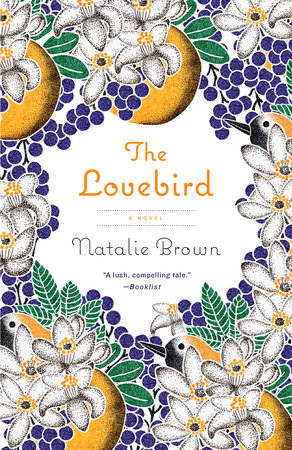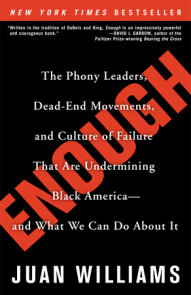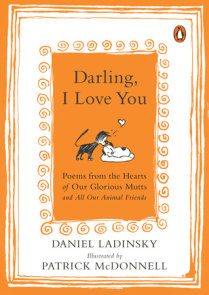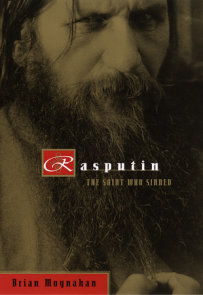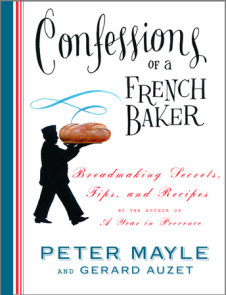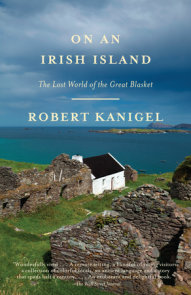READERS GUIDE
The discussion questions and information in this guide are intended to enhance your reading and discussion of The Lovebird by Natalie Brown.Introduction
A spectacularly vibrant, original debut, The Lovebird takes us from the orange-scented streets of Southern California to the vast prairies of Montana, and introduces us to Margie Fitzgerald, a spirited and unforgettable heroine.Margie has a soft spot for helpless creatures; her warm heart breaks, her left ovary twinges, and she is smitten with sympathy. Under the spell of her seductive but troubled Latin professor, she joins a ragtag group of animal rights activists called Operation H.E.A.R.T. and appears to have found her mission in life. But in time, Margie’s increasingly reckless actions force her to flee her flowery California home, say goodbye to her fragile father, and seek shelter on the Crow Indian Reservation in Montana. There, she will make unexpected discoveries about animals, kinship, love, and her own heart.
Questions and Topics for Discussion
1. Discuss your reaction to the character of Margie. How would you describe her to someone who has not read the book? To what extent, if at all, did you identify with her? What were your hopes for her as you made your way through The Lovebird?
2. Margie thinks of herself as being “Always Alone” even though she has a number of people in her life—and in her imagination. Who among these characters do you think Margie is most similar to and why? Which of these characters is your favorite?
3. The Lovebird is divided into two distinct sections. Discuss the differences in tone, setting, and characters between books one and two. Do you prefer one over the other? What motifs serve to connect the two books and make the novel a unified whole?
4. Discuss the use of language in the novel. How did you respond to Margie’s “voice” as it is reflected in the prose? What about the use of Latin, a dead language, in book one and the use of Crow, a language that has miraculously persisted in living, in book two? How do you think the presence of these endangered languages works to reinforce certain themes within the story?
5. What roles do absence and longing play in the narrative? Discuss these themes as they relate to Margie and other characters.
6. How is The Lovebird similar to other coming-of-age stories you have read? In what ways is it distinctive?
7. A variety of environments, both interior and exterior, figure in The Lovebird, including houses, apartments, neighborhoods, gardens, and regions of the country. Discuss the depiction of the different dwellings, landscapes, and other settings in the book. How do these environments relate to or reflect the personalities and emotions of the characters?
8. To what degree did you connect with Margie’s concerns about the treatment and welfare of animals? Did you find her response extreme or understandable? What animal-related issues did the book raise for you? Did you come away from the book thinking there may be solutions to the problems Margie encounters?
9. Margie describes many of Operation H.E.A.R.T.’s efforts—or “campaigns”—to help animals. Did you feel the actions of the crew were worthwhile? Or were they, as Jack Dolce says, “an ineffectual exercise in folly”? Does the novel take a stance on how change is best promoted? Do you think change can be effected through group efforts, or should it happen organically on an individual-by-individual basis?
10. Discuss your reaction to the character of Jack Dolce. What role does he play in Margie’s journey? In what ways is he, as Margie describes, a “hinge” linking one phase of her life to the next?
11. Both humor and sadness are woven through the narrative. Which of these qualities stood out the most for you? Why?
12. The Lovebird is full of mementos, “relics,” and totems, tangible objects that become emblems or symbols for something—or someone. Identify some of the totems that appear in the book.
13. How did you react to Margie’s habit of imbuing even the most everyday objects with emotional significance? How does this habit connect to the Catholic religious tradition in which Margie has been raised and to some of the Crow traditions she later learns about?
14. Rasha is a perfumer who describes her desire to create “an invisible kind of beauty.” How does the nature of perfume reflect, in some way, Rasha’s role in Margie’s life? How does perfume’s “invisible beauty” contrast with the other totems in the book?
15. Margie seems to have inherited Rasha’s talent for smelling. Discuss the role of scent in The Lovebird. How does it function in the narrative? What, in your experience, has been the relationship between scent, memory, and emotion?
16. What is the English translation of the name “Rasha”? How does the author’s choice for Rasha’s name connect to Margie’s desire to merge with the natural world? Explain.
17. The Lovebird is full of mothers in various forms. Discuss the present, absent, and other types of mothers who figure in the novel. To what degree, if any, do you think the book is about motherhood?
18. Single fathers also populate The Lovebird. Compare and contrast the different single fathers in the book. What are their strengths and weaknesses?
19. Little girls are abundant in the novel. In addition to Annette, Cora, and Fern, readers get several glimpses of Margie as a girl, along with a few of Granma. How are these girls alike, and how are they different? Why do you think the author chose to make the younger characters in the novel girls and not boys?
20. Discuss Margie’s relationship to the natural world before she moves to the Crow Reservation. When and how is this relationship expressed? How does it relate to her spirituality? Do you think the relationship transforms in book two, or does it remain essentially the same in quality while growing deeper?
21. How did you respond to the buffalo hunt and Margie’s choice to participate? What did you imagine would be the long-term effects of the hunt on Margie? On Jim? Do you think they will continue the tradition in subsequent years?
22. Margie expresses her fear of becoming a cliché—the “lost white person who is saved by magical Native Americans.” Do you feel her concern is valid? Do you think there is a mutually beneficial exchange of love between Margie and the Crow family, a mutual saving? Or is it one sided?
23. Families take many forms in The Lovebird. Are there any nuclear families in the novel? Discuss the novel’s portrayal of nontraditional families in relation to Granma’s description of “driftwood lodges.” How is the book’s depiction of families relevant to contemporary American culture?
24. The Lovebird features different types of love, including the love between friends, the love between humans and animals, romantic love, and familial love. Did the book’s last chapter (before the epilogue) end the way you expected? What type of love do you think is celebrated at that chapter’s close?
25. How did you feel about Margie’s future as it was revealed in the epilogue? Were you happy with or surprised by the life decisions she made?









